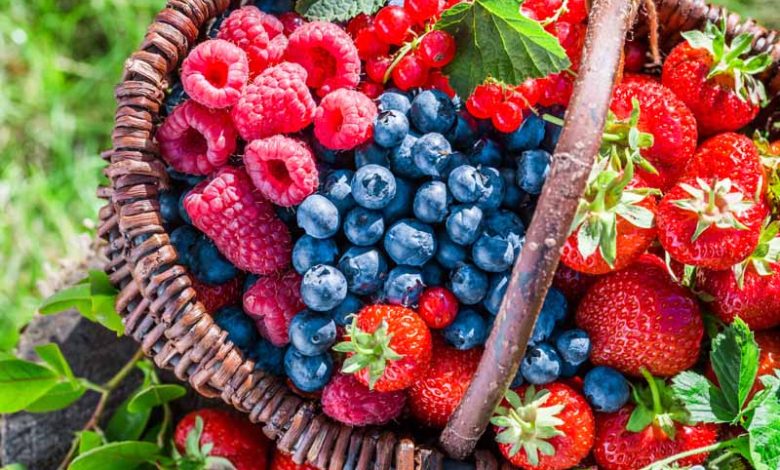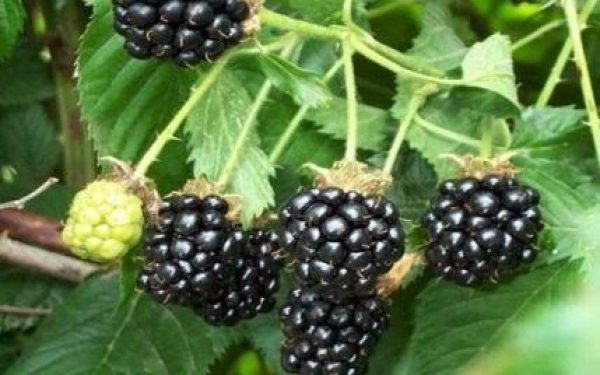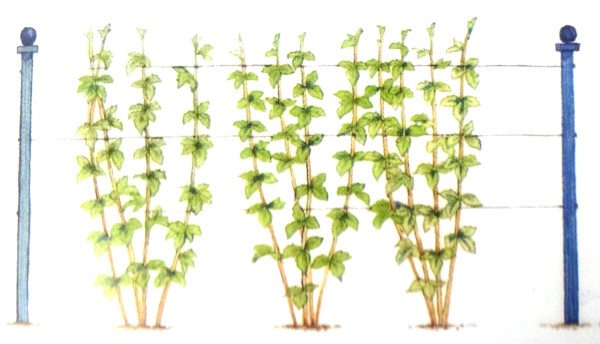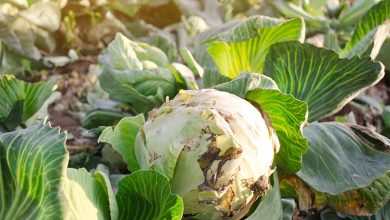Wild Fruits: How to Plant Blueberries and Raspberries in the Garden

Today we will see how to grow wild fruits step by step, specifically how to grow blueberries and raspberries, fruits of two useful bushes in the garden that are also compatible to grow together.

Wild fruits are so called because they come from plants that grow spontaneously in the field. They are delicious and very nutritious and, being wild species, they are able to get by on their own and do not require too much attention and care, so… why not cultivate them?
What are the red fruits or wild fruits and what are they for?
There are several bushes of wild fruits, red fruits or berries, that can be planted in the margins of the orchard. Some of them are:
- Cranberry (black, blue or red)
- Raspberry
- Blackberry
- Currant (red, white, black or «gooseberry»)
- blackberry or blackberry
- sour cherry
- Arbutus
- Elder
It is highly recommended to plant wild fruits in the orchard because they favor biodiversity and the presence of beneficial pollinators. In addition, wild fruits such as blueberries, raspberries or blackberries are beneficial foods for health due to their high content of vitamins and antioxidants. These strawberries are consumed as fresh fruit but are also used to make jams, preserves and desserts.

In this post we will see how to plant blueberries and raspberries, but we also have the sheet on how to grow blackberries in the garden. These are the most common wild fruits in Spain but surely there are many more in other parts of the world, if you know others, tell us in the comments.
How to Grow Blueberries in the Garden
To plant blueberries we need a temperate-cold climate, since this plant supports very low temperatures well, but not high ones. Prefers sun but tolerates shade (although the lingonberry variety needs full sun).
The blueberry plant contributes to the formation of humus in the soil. It requires moist and acidic soils (pH 4-5.5) and does not tolerate very strong winds, so if the area is very exposed to the wind , protection meshes or other windbreak structures may be necessary.
How to plant blueberries
Blueberries should be planted in fall or early spring.
If you have bought the blueberry bush in the nursery, remove suckers and secondary branches (leave a maximum of 50% of the aerial part before planting). Put it into the soil to the same depth as it was in the pot or a little deeper, and add manure or mature compost.
Irrigation
It is quite demanding, especially at the beginning, when you have just established the plant. If there are periods of more than a week without rain, water them with about 25-50 liters of water per week (one or two buckets «of scrubbing» more or less), which is what the plant needs per week. If it rains it will not be necessary.
Fertilizer and other tasks to grow blueberries
Putting a padding or mulching at the end of winter is highly recommended, and, although they are not very demanding in terms of nutrients, an annual application of fishmeal, blood and bones will favor the formation of new branches.
blueberry pruning
Training or “blunting” pruning is necessary in autumn for the first three years (you must remove the tips of the branches).

Blueberries fruit on «old wood» so pruning will not be necessary for several years. When the bushes are larger and bushier, cut back any old or damaged branches, making sure to leave enough space between them for air circulation (as you can see in the photo).
In the case of lingonberries, pruning is not necessary, and you will only have to remove excess branches and runners.
How to Grow Raspberries
Growing raspberries is easy since it is a fairly resistant and undemanding bush. Raspberries are wild fruits that can be grown in almost all climates as they resist both low and high temperatures, sun and shade and do not require much water (only light watering is necessary during the summer months in very arid areas without rainfall)..

The raspberry needs deep soils (it does not thrive in pots) and with high water retention capacity but not waterlogged, so a compact soil is not recommended. A soil rich in humus or organic matter is essential, so growing blueberries together with raspberries is very suitable because the former favor their formation.
They need a soil with a neutral or slightly acidic pH (if the pH is higher than 7 they suffer from iron deficiencies).
How to plant raspberries in the garden
It is best to buy the bushes already formed and plant the raspberries in the fall (Although they can also be sown from seed, this will take much longer).
To plant raspberries, if several specimens are planted, leave a distance between plants of approximately half a meter and 1.5-2 meters between rows.
The root ball is buried at a depth of about 50 cm, having previously mixed the soil with compost or well-matured manure.
Tutoring raspberries and other tasks
Raspberries are not very picky about nutrients. Once planted, they hardly need fertilization, although an organic mulch or mulch in spring is very good for them because it provides the necessary nutrients, protects the soil and favors the ripening of the fruits.

It is important to trellise the raspberries. This shrub grows best with a support that prevents the branches from bending (an example of how to trellise raspberries can be seen in the photo).
Every year new canes will come out, so when the old ones stop bearing fruit, cut them and tie the new ones in their place -see section «Curiosities» -.
When to prune raspberry and how to do it
The first raspberry pruning should be done in late winter or early spring. Leave the thickest and most vigorous canes at a height of 80 cm or 1 meter and keep each bush with a width of 30 to 60 cm.

It is also convenient to prune raspberries in late summer, after the last harvest. Before autumn it is advisable to prune the canes that have given fruit. They should be cut at ground level to encourage the growth of new shoots.
Curiosities
The roots and crowns of this plant are perennial but its stems or canes are biennial. During the first year they do not bear fruit (they only grow), and the next they flower, bear fruit and die.
Raspberries can be eaten fresh or frozen for later consumption (if you have a lot of them it is better to do this because otherwise they may spoil).
References
- Ovalle, C. et al., 2007. Cover crops in organic raspberry production: effects on soil nutrient content and plant growth and production. Technical Agriculture (Chile), vol. 67, no. 3, p. 271-280.
- Gordó, M., 2011. Practical guide for the cultivation of Blueberries in the northern area of the province of Buenos Aires. EEA San Pedro, National Institute of Agricultural Technology (Argentina).
- Gao, G. & Draper, E., 2017. Growing Blueberries in the Garden. Ohio State University Extension, Fact Sheet Number HYG-1422.
- Morales, CG et al., 2017. Raspberry agronomic management manual. INIA Bulletin No. 7 (USSN 0717-4829). Agricultural Research Institute, Ministry of Agriculture (Chile).

![Photo of Sowing Ginger in your Garden: [Care, Irrigation and Substrate]](https://www.complete-gardening.com/wp-content/uploads/2021/06/cultivar-jengibre-en-huerto-390x220.jpg)

![Photo of The Largest Tree in the World: [Height, Location and Characteristics]](https://www.complete-gardening.com/wp-content/uploads/2022/08/the-largest-tree-in-the-world-height-location-and-characteristics-390x220.jpg)